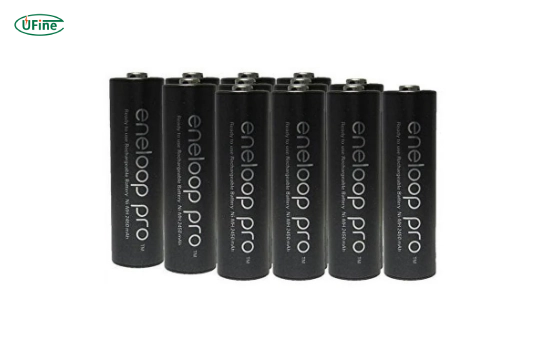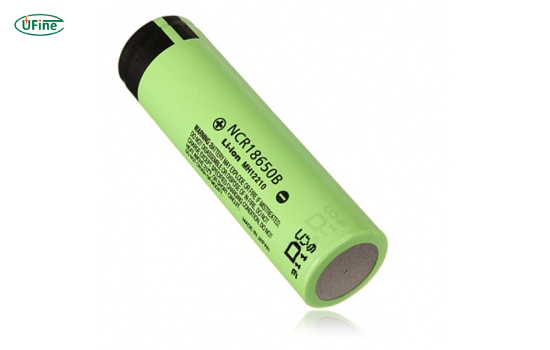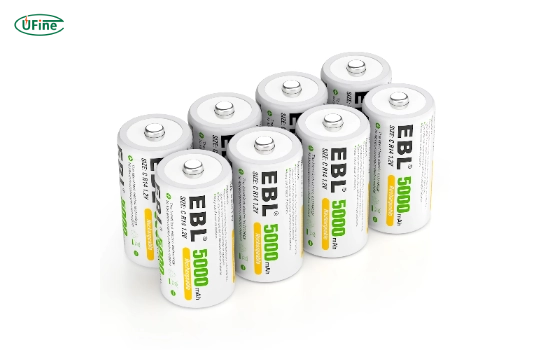In our tech-driven world, rechargeable batteries have become indispensable. They are everywhere, from powering our smartphones to keeping our cameras ready for action. But with so many options available, how do you determine which rechargeable batteries are the best? Let’s dive deep into the world of rechargeable batteries and find out.
Part 1. Understanding rechargeable batteries
Rechargeable batteries, also known as secondary cells, can be charged and used multiple times. Unlike disposable batteries that get discarded after a single use, these batteries offer a more sustainable and cost-effective solution.
Part 2. Types of rechargeable batteries
1. Lithium-ion (Li-Ion)
Li-Ion batteries are the most popular rechargeable batteries today. People use them in smartphones, laptops, and other high-drain devices. These batteries offer high energy density, low self-discharge, and no memory effect.
2. Lithium Polymer (Li-Po)
A variation of Li-Ion batteries, Li-Po batteries are known for their lightweight and flexible design. People commonly use them in drones, RC vehicles, and some smartphones.
3. Nickel-cadmium (NiCd)
One of the oldest types of rechargeable batteries, NiCd batteries are known for their long life and durability. However, they suffer from the “memory effect,” where the battery’s capacity reduces if not fully discharged before recharging.
4. Nickel-metal Hydride (NiMH)
NiMH batteries improve over NiCd batteries, offering higher capacity and less prone to the memory effect. People commonly use them in consumer electronics, such as cameras and remote controls.
Part 3. Which rechargeable batteries are the best in the market?
1. Ufine 3.7 V 1000mAh Lithium Ion Battery (Li-ion)
The Ufine 3.7 V 1000mAh is a versatile and reliable Li-Ion battery, perfect for various devices. Its compact size and high energy density make it ideal for applications like RC vehicles and electronics projects.
2. Eneloop Pro (NiMH)
Eneloop Pro batteries are renowned for their high capacity (up to 2550mAh) and low self-discharge rate. They can retain up to 85% of their charge after a year of storage, making them ideal for high-drain devices like cameras and flashes.
3. AmazonBasics (NiMH)
AmazonBasics rechargeable batteries offer a cost-effective solution without compromising quality. After a year, they come pre-charged and retain up to 80% of their charge. They are an excellent option for everyday devices like remotes and toys.
4. Panasonic NCR18650B (Li-ion)
Users favor this Li-Ion battery for its high capacity (up to 3400mAh) and reliability. People commonly use it in high-drain devices like flashlights and vape mods.
5. EBL 5000mAh (NiMH)
EBL’s D-cell batteries offer a whopping 5000mAh capacity, making them perfect for heavy-duty applications. They also boast a long cycle life and low self-discharge rate.
6. Tenergy Centura (NiMH)
Tenergy Centura batteries are known for their long shelf life and environmental friendliness. They retain up to 85% of their charge after a year and are suitable for devices like solar lights and cordless phones.
7. Bonai AA (NiMH)
Bonai AA batteries provide high capacity (2800mAh) and reliability. They are pre-charged and ready to use out of the box, making them ideal for game controllers and other high-drain devices.
8. Duracell Recharge Ultra (NiMH)
Duracell Recharge Ultra batteries are known for their fast charging capabilities and long-lasting power. They are an excellent choice for digital cameras and other electronic devices.
9. Efest IMR 18650 (Li-ion)
The Efest IMR 18650 battery is popular among vapers for its high discharge rate and safety features. People also use it in flashlights and other high-drain devices.
10. Powerex PRO (NiMH)
Powerex PRO batteries are designed for professional use, offering high capacity (2700mAh) and exceptional performance. They are perfect for photographers and other professionals who require reliable power.
Part 4. Factors to consider when choosing rechargeable batteries
1. Capacity
Capacity, measured in milliampere-hours (mAh), indicates how much charge a battery can hold. Higher capacity batteries last longer between charges.
2. Voltage
Voltage determines the power output of the battery. Ensure the battery’s voltage matches your device’s requirements.
3. Cycle Life
Cycle life refers to the number of complete charge and discharge cycles a battery can undergo before its capacity significantly drops. Batteries with higher cycle life are more durable.
4. Self-Discharge Rate
All batteries lose charge over time, even when not in use. A lower self-discharge rate means the battery retains its charge longer.
5. Environmental Impact
Consider the environmental footprint of the battery. NiCd batteries, for example, contain toxic cadmium, making them less eco-friendly than NiMH or Li-Ion batteries.
Part 5. How do you extend the life of your rechargeable batteries?
1. Proper Charging
Always use the recommended charger for your batteries. Overcharging or using an incompatible charger can reduce the battery’s lifespan.
2. Avoid Over-Discharging
Try not to drain your batteries completely before recharging. Deep discharges can damage the battery and shorten its life.
3. Store Properly
Store your batteries in a cool, dry place. Avoid exposing them to extreme temperatures, which can degrade their performance.
4. Regular Use
Rechargeable batteries perform best when used regularly. If you have batteries in storage, consider cycling them (charging and discharging) every few months.
Part 6. Common myths about rechargeable batteries
1. Memory Effect is a Thing of the Past
While the memory effect was a significant issue with older NiCd batteries, modern NiMH and Li-Ion batteries are much less affected. It’s still good practice to fully discharge NiCd batteries occasionally, but it’s less critical for newer types.
2. Overcharging Ruins Batteries
Manufacturers design modern chargers to prevent overcharging. They automatically stop charging once the battery is full. However, unplugging the charger once the battery reaches full charge is still a good idea.
3. All Rechargeable Batteries are the Same
Different types of rechargeable batteries have varying characteristics. NiMH batteries are excellent for high-drain devices, while Li-Ion batteries are better for gadgets requiring high energy density.
Part 7. FAQs
-
What is the best rechargeable battery for high-drain devices?
NiMH batteries like the Eneloop Pro are excellent for high-drain devices due to their high capacity and low self-discharge rate. -
Can I use rechargeable batteries in any device?
Most devices with standard battery sizes (like AA and AAA) can use rechargeable batteries. However, always check the device’s manual to ensure compatibility. -
How do I properly dispose of old rechargeable batteries?
People should appropriately recycle rechargeable batteries. Many retailers and recycling centers accept old batteries. Check with your local waste management service for guidelines. -
How long do rechargeable batteries last?
The lifespan of rechargeable batteries varies by type and usage. NiMH batteries can last up to 500-1000 cycles, while Li-Ion batteries can last 300-500. -
Is it worth investing in rechargeable batteries?
Yes, rechargeable batteries are cost-effective and environmentally friendly. They reduce waste and save money in the long run compared to disposable batteries.
Related Tags:
More Articles

LiPo Battery Discharge Rate Guide & Calculation Tips
Understand LiPo battery discharge rates, C-ratings, and how to calculate max current. Essential guide for RC, drones, and electronics users.
High‑Capacity 3S LiPo Batteries: 5000 mAh vs. 10000 mAh
Compare 3S LiPo 5000mAh vs 10000mAh batteries by weight, power, and use. Find the best fit for your drone, RC car, or boat setup.
Top 5 Applications for Small 3S LiPo Batteries
Small 3S LiPo batteries power drones, RC gear, wearables, and robotics with high energy and low weight. Making them ideal for compact electronics projects.
Building and Charging Your Own 3S LiPo Pack: A Step‑by‑Step Guide
Learn how to build, balance, and charge a 3S LiPo battery pack safely at home with this complete DIY guide for hobbyists and beginners.
How to Choose the Right LiPo Battery Plug Type?
Discover the best LiPo battery plug types, how to choose them, and expert tips for safe usage, soldering, and maintenance.













